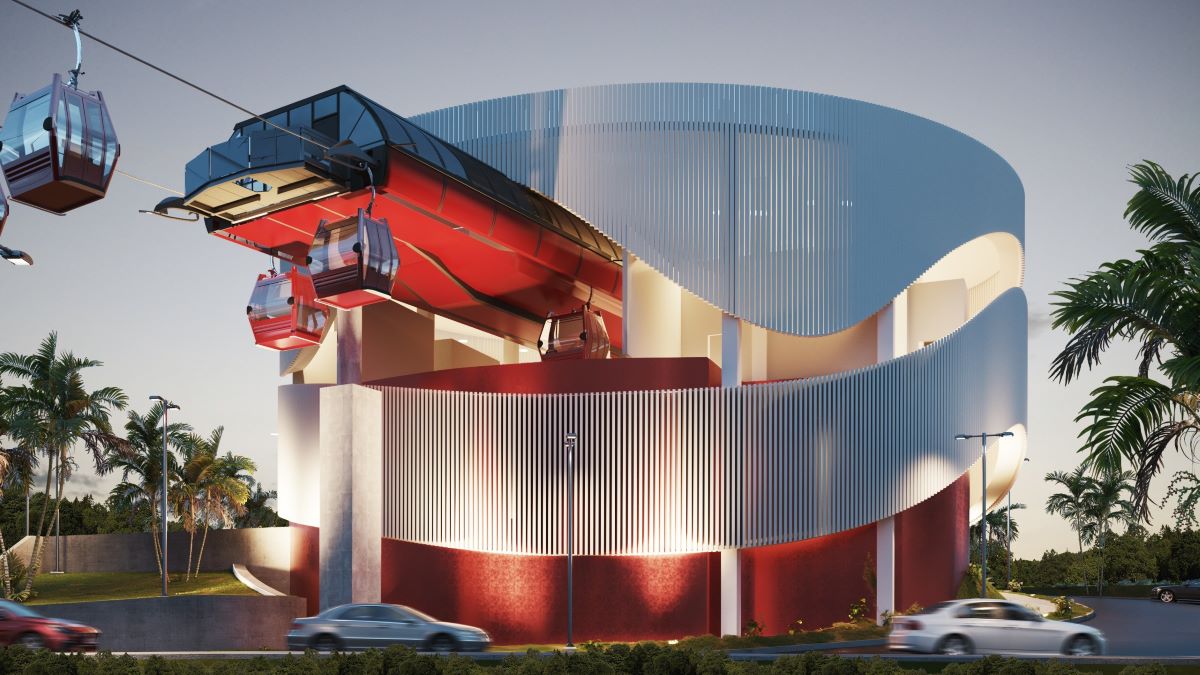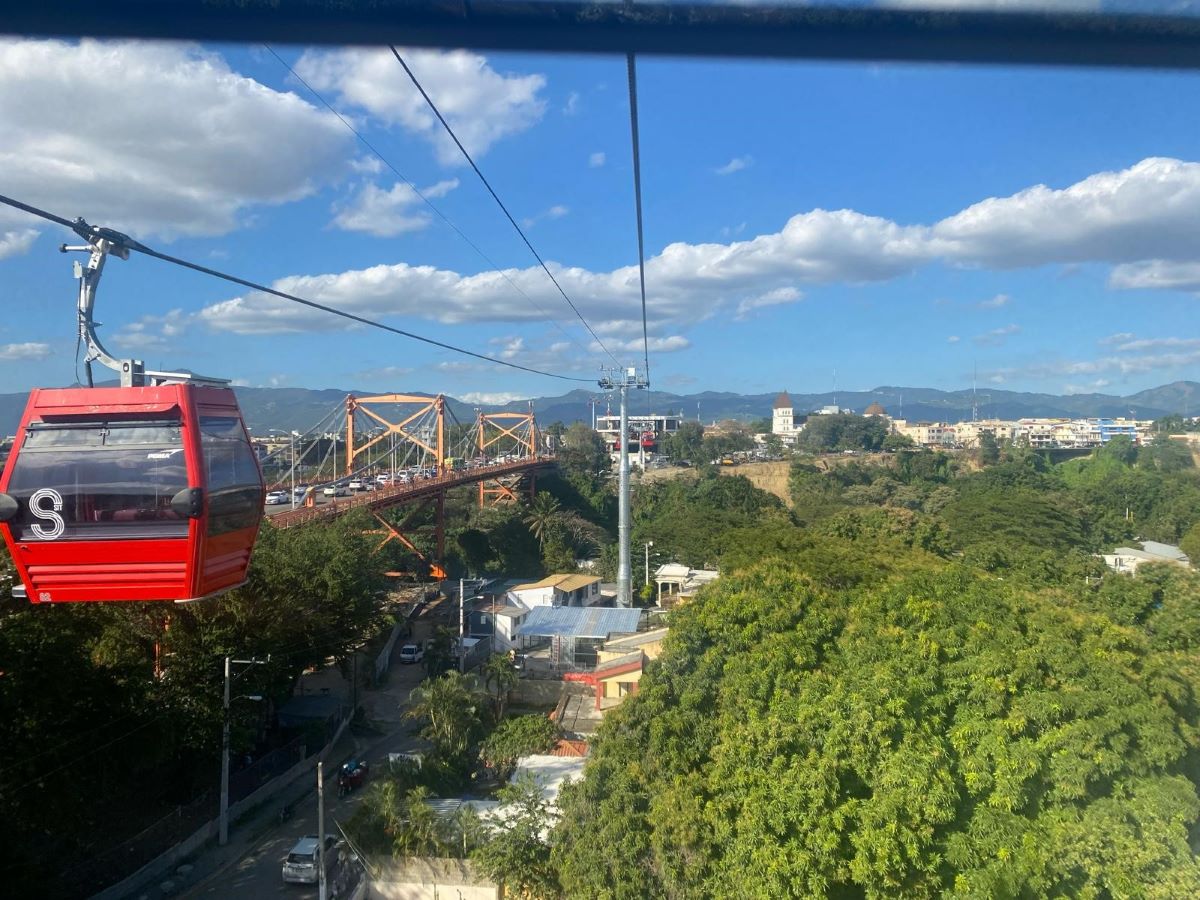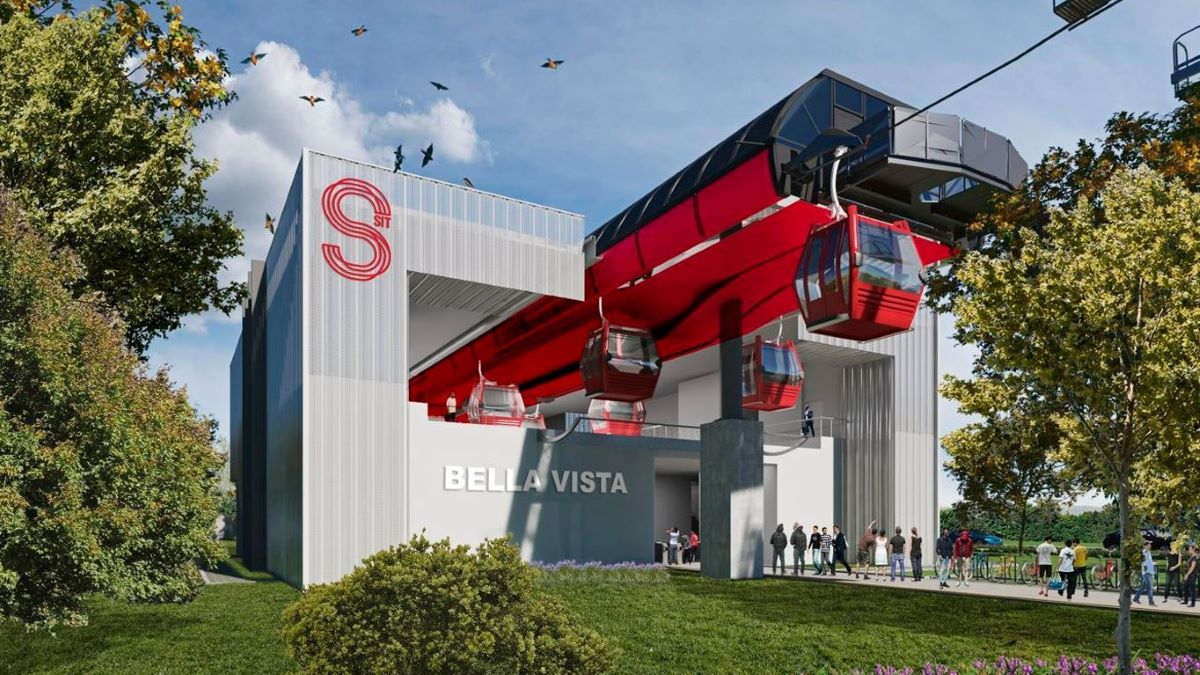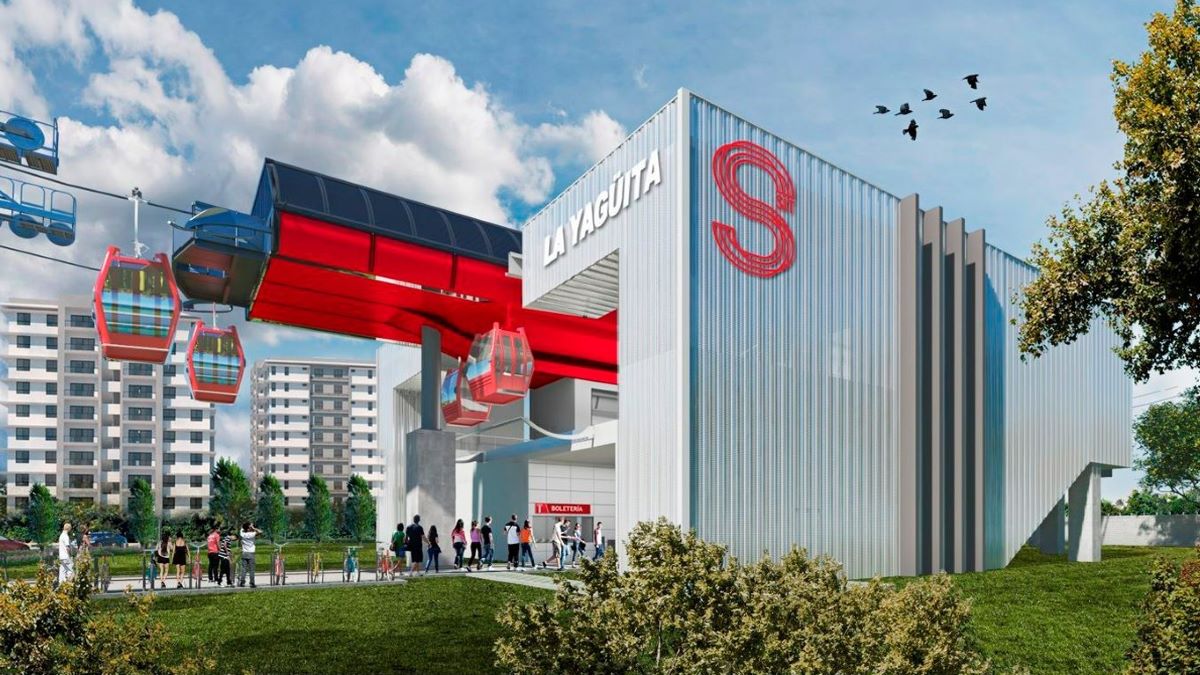
Cities, SI Urban 1/2024
The Dominican Republic is investing in another cable car by POMA
With over 770,000 residents, Santiago de los Caballeros is the second-largest city in the Dominican Republic after Santo Domingo. Consequently, traffic congestion is high in the northern region of the country.
Carbon monoxide pollution is high, the streets in the center are often congested, and many people are late for work due to traffic jams, as reported by the media portal La Información.
A cable car is intended to improve urban mobility and better integrate other modes of transportation. 130,000 commuters, students, and citizens are expected to benefit from the cable car, allowing them to better attend work, shop and spend their leisure time.
The cable car in Santiago
is expected to be operational by spring 2024. © POMA

Concept
To achieve this, POMA is currently working with local companies to build the “Santiago 1“ cable car on behalf of the state institution “Trust for the Development of the Mass Transportation System of the Dominican Republic (FITRAM).“
The route is approximately four kilometers long and passes through the historic city center and the neighborhoods of Bella Vista and Yagüita del Pastor.
Four stations will be built: Central Terminal, Mirador del Yaque, Presidente Antonio Guzmán, and La Yagüita. In a further step, the cable car will be divided into two lines to connect the University in La Barranquita on one hand, and the Pekin neighborhood on the other.
Interchange possibilities with public transportation are a key component of the project, especially the connection to the new monorail currently under construction.
A shared transportation hub will be built directly at a major intersection. Electric buses and a new bicycle infrastructure are additional components of the Santiago Integrated Transport System (SIT). The common goal is to achieve gentle and sustainable mobility for all.
The cable car in Santiago
is the third installation by POMA for the Dominican Republic within six years. © FITRAM

Technical details
The cable car will have a cabin garage and 23 towers. A direct-drive motor of the latest generation will ensure reliable, fast, and environmentally friendly transportation. With 129 cabins for twelve people each and a speed of 7 m/s, “Santiago 1“ will be able to transport 4,500 passengers per hour and direction. The travel time will be ten minutes.
Luis Abinader, President of the Dominican Republic, explains that ”the experience of the last ten years of incorporating this type of cable system as mass public transportation has been highly successful throughout Latin America and many other parts of the world and we, in Santo Domingo as today. In Santiago, we want to join this experience.”
Training and maintenance
The construction of the cable car has progressed smoothly so far, and the facility is expected to be operational by spring 2024. Initially, the manufacturer POMA will be part of the operation and maintenance of the transportation system and is already providing intensive training for local staff.
POMA already operates and maintains the two urban cable car lines in Santo Domingo – Line 1 since 2018 and Line 2 since 2023. Line 1 for example is used on average 12,500 passangers daily.
It operates 17 hours per day, 355 days per year, with a avability rate of 99,9 percent. Ad hoc assistance is in place, with an operationg partner supported by dedicated local POMA teams, who are the bedrock for these remarkable performances, responding to the high use of the system all year round, and contributing naturally to maintaining regular and increasing traffic.
Technical Data:
CABLE CAR SANTIAGO 1
| Capacity | 4.500 P/h/d |
| Length | 3.900 m |
| Speed | 7 m/s |
| Travel time | 10 min |
| Supports | 23 |
| Number of cabins | 129 |
| Cabin capacity | 12 p |
Sensitization & reactions
In Santiago the population is being familiarized with the new mode of transportation. In January 2024, the training and educational process for citizens began, coordinated by the FITRAM social team in Santiago.
The social impact of the cable car is considered to be very significant. It is expected that the cable car, along with the monorail, will boost all economic and academic sectors of Santiago, improve the mobility of many people, and significantly reduce traffic congestion on the streets.
Tito Ventura, President of the Industrial Association AIREN, is convinced that both systems together will make Santiago a more attractive and competitive city. The reduction of the city‘s ecological footprint is also emphasized by many stakeholders.








